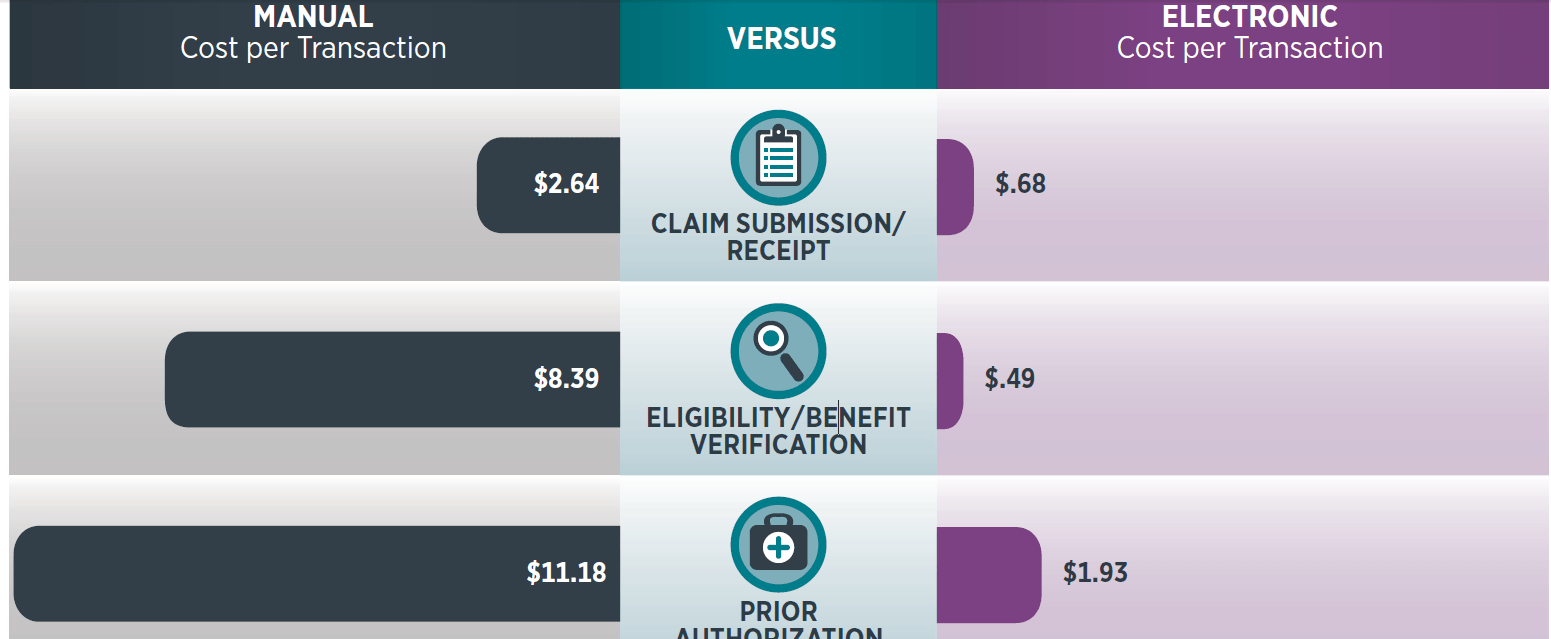
Reducing manual business transactions could save healthcare $9.4 billion in savings, according to new data released today in the fourth annual 2016 CAQH Index. The index reveals that conducting resource-intensive manual transactions are costing U.S. health plans and healthcare providers as much as $11 more per transaction and on average $6 more than when conducted electronically.
CAQH Index Overview
The fourth annual CAQH Index measures adoption, costs and, for the first time, provider labor time associated with the most common administrative transactions conducted between health plans and providers. These include verifying a patient’s insurance coverage, sending and receiving payment, inquiring about the status of a claim and obtaining prior authorization for care.
The findings from the 2016 CAQH Index are based on voluntary nationwide surveys of providers, as well as commercial medical and dental health plans. Participating medical health plans represent over 140 million covered lives—nearly 46 percent of the commercially insured U.S. population—and 5.4 billion transactions conducted in 2015. Participating dental health plans represent 112 million covered lives—about 43 percent of commercially insured U.S. population—and 564 million transactions conducted in 2015.
The 2016 CAQH Index stresses the savings potential available to the health and dental industry through full adoption of electronic business transactions. To encourage greater adoption, the report proposes that the industry share best practices, conduct targeted industry-led efforts to reduce adoption barriers and perform systemic reviews of current standards, codes, operating rules and policies.
Key Findings
Key findings show that medical providers could save at least 1.1 million labor hours per week by transitioning to fully electronic transactions. Providers now spend 8 minutes on average, and up to 30 minutes on manual tasks, which include making phone calls, sending faxes and mailing correspondence. Prior authorization offers providers the greatest time savings potential if conducted electronically, reducing the time per transaction from 20 to 6 minutes and the cost from $7.50 to $1.89.
The potential savings from full industry adoption of electronic transactions grew by nearly one billion from what was reported in the CAQH Index last year. This growth is due in part to including an additional transaction to the six that were previously measured. Claims attachments, the added transaction, are used to send extra information required for some healthcare claims, such as discharge summaries or operative reports. Of note, 94 percent of claim attachments are currently submitted manually, which each cost nearly $6 more to process compared to electronic attachments. The collection of more precise data on cost savings for providers this year also contributed to the reported increase.
Two of the electronic transactions with consistently high rates of adoption over the past three years of CAQH Index reports for medical health plans and healthcare providers are claims status inquiries and eligibility and benefits verification. Advances in technology, as well as the development of industry standards and operating rules, have likely influenced and encouraged greater adoption. While use of these electronic inquiries rose by more than 5 percent, the corresponding volume of manual verifications has not declined as rapidly with participating health plans fielding more than 72 million telephone inquiries in 2015.
Beyond medical savings and cost, the CAQH Index tracked for the second year adoption of electronic transactions by dental health plans and providers, and for the first time the cost savings. Adoption of the four electronic transactions measured for commercial dental health plans was on average 30 percent lower than adoption by commercial medical health plans. This gap presents a significant savings opportunity for the dental market. Full electronic adoption of the transactions studied could save dental health plans nearly a half billion dollars and dental providers more than $1 billion in labor costs.
